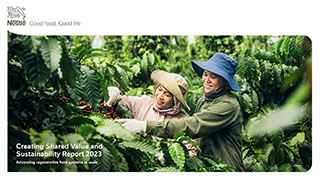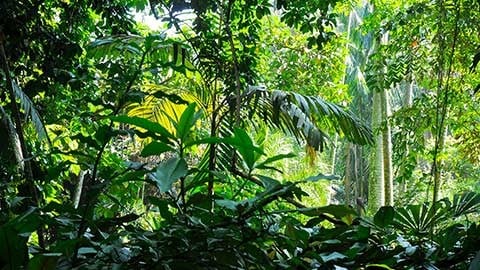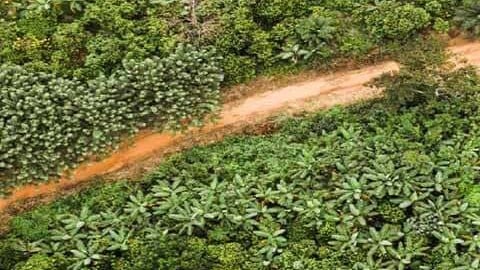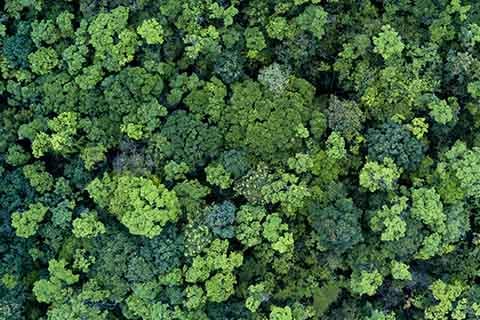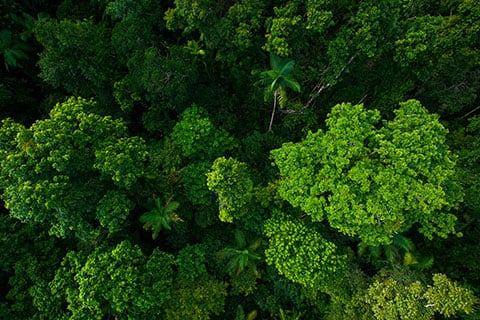Our palm oil transparency dashboard
This transparency dashboard aims to update stakeholders about our progress in achieving deforestation-free palm oil and to share the learnings and challenges we face along the way. Much of the information is based on data gathered through Starling, the satellite-based system that we have used to monitor our entire palm oil supply chain since 2019, and subsequent investigations conducted with our partners and suppliers.
Since 2017, Starling has been helping us better understand the complex deforestation patterns in palm oil producing areas, including where deforestation occurs, what are its key drivers and who is involved.
We’ve been using Starling to identify deforestation risks and cases around the mills we source from (pdf, 8Mb), and to prioritize actions within our supply chain. Starling has also helped us better understand deforestation patterns in palm oil sourcing areas, including future risks of deforestation. These learnings have helped us develop our Forest Positive strategy.
How are we using Starling data?
Supplier engagement: When we receive alerts through our Starling dashboard, we start by engaging our direct suppliers linked to the mill around which the alert was detected. This helps us understand if the alert is linked to our supply chain, what measures companies in our supply chain are taking to address deforestation risk and to constructively discuss collaboration to accelerate progress.
Engaging our suppliers with factual and granular data is effective. We are getting relevant information more quickly, including concession information (i.e. area allocated by a government or other body for industrial-scale oil palm plantations). Our suppliers are more engaged as they see the benefit of being able to verify their no-deforestation commitment. In addition, this process helps us identify where we need to add resources on the ground to address risks.
On-the-ground investigation: When necessary, together with our partner Earthworm Foundation and/or with our supplier, we send teams to verify what satellite imagery is showing us and how this links to specific mills we source from. This allows us to inform our decision making, including whether we need to suspend companies.
Prioritizing action: We also use Starling to identify priority locations for forest conservation within projects we support. These include engaging smallholders located on the boundaries of at-risk forest areas for conservation planning, getting plantation companies with landbanks at risk of encroachment to commit to no deforestation, and engaging local governments in integrated land use planning.
Assessing future risks: Using Starling data and other data sets, we piloted a forest footprint (pdf, 3Mb) in our palm oil supply chain in Aceh, Indonesia, to determine our exposure to risks of future deforestation and land rights conflicts. We will scale up this work to identify areas and landscapes at risk of future deforestation with the objective of taking preventive action.
Engaging our suppliers
We use the data provided by Starling to engage our suppliers on deforestation risks.
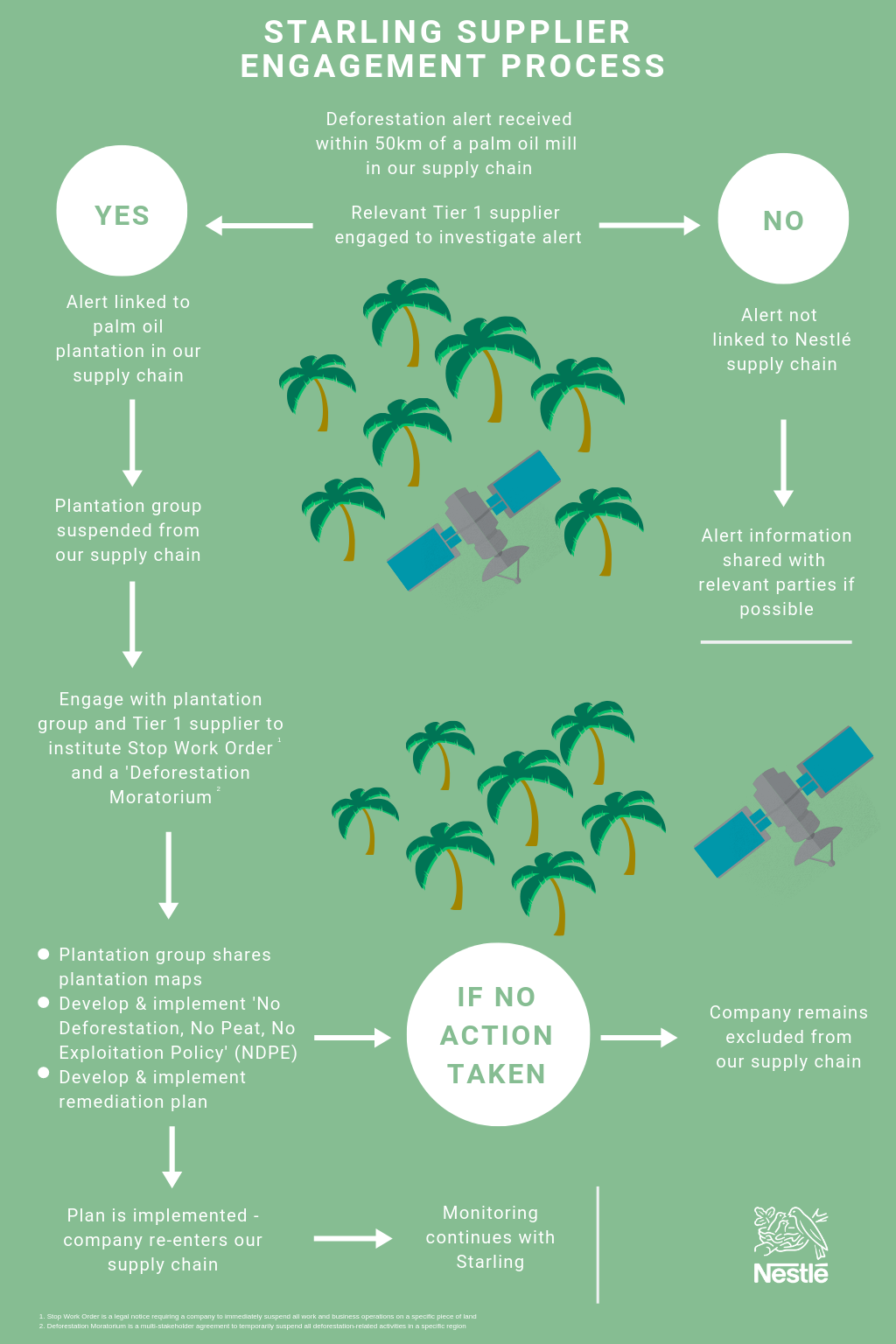
Click to enlarge
What are we learning through Starling data?
Despite decreased deforestation rates in some regions, forest ecosystems are still under threat.
Deforestation can have various drivers, including shifting agriculture, mining, palm oil or rubber plantations, and urban development. Analyzing Starling data at a more granular level has helped us better understand the scale and patterns of deforestation in palm oil producing areas. Here is what we’ve learned and why it matters:
Deforestation is still occurring in palm oil producing regions (pdf, 150Kb) where we source. Making meaningful progress at scale will require the industry achieving supply chain transparency and traceability, including smallholder farmers in forest conservation strategies and increasing meaningful collective action on the ground.
Deforestation linked to the expansion of palm oil production continues to be a reality. In 2021, there were almost 97,000 Starling alerts globally for deforestation within 50km of the mills we source from – representing 435,000 hectares of forest loss. Note that an alert does mean that deforestation occurred within our supply chain or was linked to palm oil. This is why we engage with our direct suppliers to investigate.
Benjamin Ware, Nestlé's Head of Responsible Sourcing, explains how we use Starling to monitor deforestation risk in our global palm oil supply chain.
Deforestation frontiers are dynamic.
Looking at the geographical location of Starling alerts since 2016, we are seeing areas where there has been significant changes in deforestation rates over the past few years (pdf, 100 Kb). Starling allows us to identify these trends as they happen and to act quickly where it happens. This complements analyses looking at a range of factors, including mills commitments to No Deforestation, No Peat, No Exploitation (NDPE) policies, civil society and local government engagement in forest protection, relevant legislations and policies and development of new infrastructure, such as roads and processing facilities.
Deforestation is increasingly occurring outside of concessions.
We are seeing that, where we have concession boundary information, there is limited deforestation occurring within these boundaries compared to outside them. Only 6.6% of total forest area lost occurred within concessions integrated into Starling. Since we do not yet have 100% of concession boundaries for our entire supply chain, the extent of this trend cannot be confirmed at present, but we are working to strengthen this analysis for a more complete picture of the situation.
Deforestation increasingly occurs in small-scale patches.
We are observing that forest loss is increasingly linked to small-scale deforestation: since January 2016, more than half of total forest loss in palm oil producing countries has been caused by clearance events of less than five-hectares at a time. An example of the acceleration of small-scale deforestation over time can be seen below. This is indicative of (1) an increase in deforestation led by small-scale farming for palm oil cultivation, other crops or non-agricultural activities and (2) a decrease in deforestation led by large-scale plantation companies. This understanding has led us to develop intervention strategies that specifically address drivers of small-scale clearance, such as through landscape projects.
This animation shows an example of increasing small-scale deforestation over time. In this case, this shows deforestation around a mill in our supply chain in Sarawak, Indonesia from Q1 2016 and Q4 2019.
A Forest Positive future
Over the last ten years, our understanding of deforestation and its drivers has increased. In June 2021, we published our Forest Positive strategy, moving from managing deforestation risks in our supply chains to a model for conserving and restoring the world’s forests and natural ecosystems while promoting sustainable livelihoods and respecting human rights. This will contribute to regenerating forest landscapes, protecting natural habitats, helping farming communities thrive and supporting our planet in combatting the effects of climate change.
Beyond what can be achieved by a single company, we also aim to drive transformative change by calling for more traceability and transparency, more support for smallholder farmers’ inclusion and resilience and increased collective action.
Supply chain transparency
Supply chain transparency is key to holding all supply chain actors accountable and to demonstrate progress. Transparency is required at several levels:
Our priorities going forward
- Increasing our TTP and providing support to small and medium sized mills to do so.
- Continuing to use Starling satellite monitoring to monitor, respond and verify no-deforestation in the supply chains that not been verified yet.
- Using Starling to identify areas at risk of future deforestation.
- Expanding the Forest Footprint exercise to other landscapes.
- Increasing our focus on forest restoration and conservation in vulnerable forest areas.
- Establishing partnerships to address key data gaps identified in our Forest Footprint analysis.
- Investing in new landscape projects to address the drivers of deforestation through multi-stakeholder collaboration.
Transparent information about the names and locations of the suppliers involved in palm oil production and about ownership structures between refineries, mills and concessions are required to ensure traceability and leverage. Today this information is often not available or may even sometimes be obscured by the use of shadow companies. We’ve publicly disclosed the mills we source from (pdf, 8Mb) and expect all actors in the supply chain to do the same.
While much progress has been made to achieve traceability to mill, it is essential to know in which plantation the Fresh Fruit Bunch (FFB) was grown, including the general locations of independent smallholders. We ask all our suppliers to map their entire supply chain all the way to plantation, including for third-party mills they source from. Today we stand at 70% traceability to plantation and it will take the whole industry's commitment to increase this number. Small and medium-size mills should be enabled and incentivized to implement FFB control systems and commit not to accept FFB from unknown origin.
Delivering on deforestation-free commitments requires a common progress reporting framework. This is why we’ve been supporting the development of the NDPE Implementation Reporting Framework, designed to help companies understand and track progress in delivering NDPE commitments in their palm oil supply chains. This will be crucial to monitor progress, identify gaps and drive improvement effectively as an industry.
Support for smallholder farmers
Smallholder farmers play an important role in the palm oil supply chain. They produce an estimated 40% of global palm oil volumes. No palm oil forest conservation strategy can therefore be complete without promoting sustainable livelihoods for smallholders.
Smallholders face specific challenges, including low yields, ageing oil palm trees, and lack of access to finance. These factors can lead to low incomes and vulnerability to climate and market shocks, which in turn are major drivers of expansion into forests. While these challenges require specific solutions, the sheer number of smallholders and their often-remote location make it difficult to effectively reach them. We believe there is a need to incentivize mills, refiners and traders to work together with smallholders and their communities to promote sustainable livelihoods while ensuring forest protection. Palm oil buyers need to develop and have in place strategies to address this challenge and need to convey this message to palm oil producers. Listen to a podcast on our work with smallholders in North Sumatra.
Collective action and engagement
Effective collective action and collaboration on the ground as well as engagement with governments at national and regional levels are key to drive the system change needed to ensure long-term forest conservation.
More action-oriented collaboration among supply chain actors, including buyers like Nestlé, would help address some of the collective challenges the palm oil industry is facing. Other aspects of these challenges and potential solutions are not under the direct influence of the private sector. Transparently sharing our journey, our progress and the roadblocks we face and advocating for the environment needed to achieve forest positive supply chains is crucial.
Preserving ecosystems and communities in La Encrucijada Biosphere Reserve
We are working in La Encrucijada region in Mexico to support smallholders to produce sustainable palm oil. This multi-stakeholder project looks at developing and implementing a sustainable land use plan. This involves clarifying boundaries designating areas where smallholders can grow palm and areas need to be protected as they are part of the biosphere reserve. as well as building farmers’ resilience through providing assistance with integrated farm planning (including on-farm diversification) and savings and loans programs.
An enabling environment is critical to ensure a Forest Positive future. Palm oil buyers can contribute to this by using their collective voice to:
- Send clear messages to supply chain actors about their expectations for no deforestation, inside and outside concessions, and their willingness to support overcoming key challenges like smallholder inclusion
- Help strengthen certification schemes
- Engage producer country governments to share transparent data and information about the trends they observe and develop solutions for sustainable land use planning and development
- Engage consumer country governments to help them understand of the root causes of deforestation and on-going solutions tailored to local contexts.
- Call for appropriate regulatory and non-regulatory measures, including mandatory human rights and environmental due diligence.
Related information
News
- 22 June 2021: Nestlé moves beyond forest protection to a forest positive strategy and boosts its use of satellite services
- 3 December 2020: Focusing on regenerative agriculture and moving to renewable electricity, Nestlé redoubles efforts to combat climate change
- 30 April 2019: Nestlé verifies three-quarters of its supply chain as deforestation-free
- 5 March 2019: Nestlé lays out action plan to help end deforestation and restore forests in the cocoa supply chain
- 1 February 2019: Nestlé speeds up efforts towards full supply chain transparency





